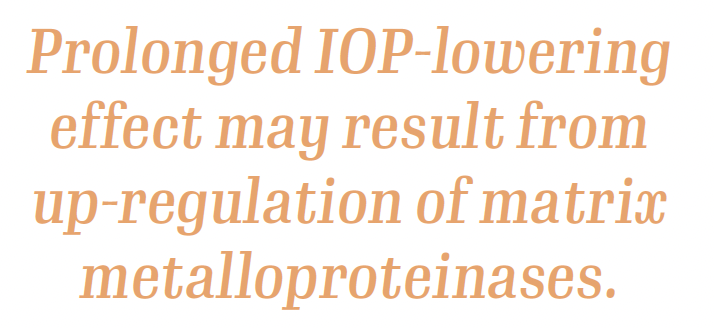Bimatoprost implant reduces intraocular pressure for 2 years or more
Researchers believe that the prolonged effect of bimatoprost may result from up-regulation of matrix metalloproteinases, leading to sustained remodelling of the outflow pathways.

A Phase 3 clinical extension study of a bimatoprost implant (Durysta, AbbVie) showed that patients had sustained lowering of their IOP for 2 years or more with no additional treatment and no changes in their visual fields, according to the first author of the trial, Dr Felipe Medeiros.
Previous results from the Phase 1 and 2 clinical studiesof the device, which is administered intracamerally through a preloaded applicator with a 28-gauge needle, showed that the duration of its IOP-lowering effect had extended beyond the expected period of intraocular drug bioavailability.1,2
Investigators then conducted a 24-month, open-label, multicentre, long-term safety and efficacy extension study of patients with open-angle glaucoma or ocular hypertension who had received a bimatoprost implant in a Phase 3 trial and completed that study. A total of 200 patients were enrolled after completing one of two identically designed, 20-month, randomly assigned Phase 3 trials (ARTEMIS Studies 1 and 2).
The outcome measures of the extension study were both the number of patients who did not need additional (rescue) IOP-lowering treatment in the study eye for 2 or 3 or more years after the third implant administration during the ARTEMIS trial, and the IOP and visual field mean deviation in the study eye of these patients. The study is ongoing; the investigators have analysed all data available up to February 2021.
Major findings to date

During the screening for the extension study, it was found that 69 of the patients had not received rescue treatment. “The data that were available for 54 patients showed that these patients remained untreated for 2 years or more after they received the third implant during the ARTEMIS trial, and data available for 18 patients showed that they had remained untreated for 3 years or more after the third implant in the ARTEMIS trial,” Dr Medeiros said.
In addition, the visual fields of the patients in the extension study who did not require rescue medication (i.e., 50 of those with controlled IOP for 2 years or more and 16 of those with controlled IOP for 3 years or more) remained stable.
The investigators theorised that the prolonged IOP-lowering effect may result from bimatoprost-stimulated up-regulation of matrix metalloproteinases, leading to sustained tissue remodelling of the outflow pathways. Clinical studies are continuing with the goal of obtaining a further understanding of the duration of effect of the bimatoprost implant and factors that predict a long-term response.
